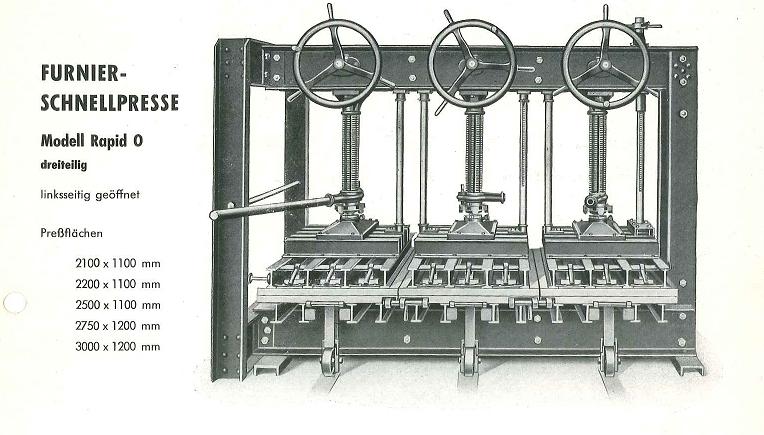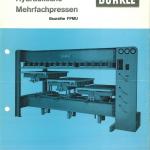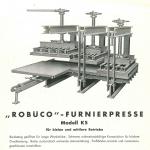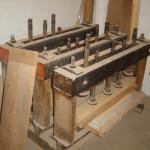Manually operated spindle press
You see the entry in
       'Ancester' of the modern hydraulic veneer press The pressure is built up by means of screws, which need to be operated independently in order to generate the pressure needed. Often the pressing surface consisted of severals segments, which could be used individually (depending on the size of the workpiece). Usually theses presses could be opened from the side in order to simplify the loading / unloading towards the operator. Some models had extensible pressing beds, which made the loading/ unloading much easier. Quite common were nonheated wood plants (cold press), which were not easy to handle because of the long pressing intervals - later they were built with preheated pressing layers made of zinc, which could be attached to the press. Later models were equipped with manual hand levers for the operation of a hydraulic pump (used in small shops) or with hydraulic pumps operated by an engine (motor pump). For artisanal purposes veneer presses with high performance hydraulic aggregates became more and more the standard, anodising with aluminum heating platens, with short open and closer intervals (cycle times) and with safety equipment. alternative terms and variants
|
CNC stacionarne mašine, roboti867
Kantovanje, obrada ivica599
Testere, mašine za rezanje425
Rendisaljke, glodalice188
Glodalice, tenon rezači180
Mašine za bušenje, glodalice126
Prese, mašine za montažu197
Mašine za brušenje319
Mehanizacija, skladištenje, pakovanje176
Površinski premaz140
Proizvodne linije119
Grijanje, sušenje, sjeckanje59
Usisavanje, komprimirani zrak, vakuum114
Tehnologija montaže, radni stolovi9
Strugovi i stružnice35
Alati, tehnologija oštrenja87
Dodatna oprema, ostalo62





